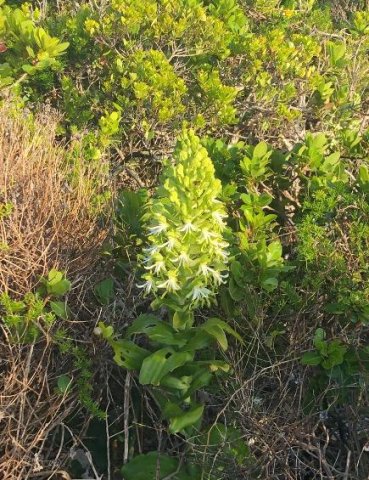Bonatea

Author: Ivan Lätti
Photographer: Bernard Coetzee
Bonatea is a genus of perennial ground orchids in the Orchidaceae family. The plants grow from oblong tubers or tuberous, fleshy roots. The leaves grow from the stems, often crowded lower down and sometimes withered at flowering time.
The inflorescence is a raceme of few to many flowers, the flowers stalked or pedicellate. Flower parts are coloured green, white or yellow. The bracts below the flowers are ovate. The sepals are unequal, the median one erect, forming the hood with the upper petal lobes. The lateral sepals are oblique and reflexed, united partly with the lip base, the lower petal lobes and the stigma arms. The deeply divided petal lobes link with the hood (the upper lobes), the median sepals, the stigma arms and the lip (the lower lobes). The three-lobed lip has a slender spur at its base, a tooth-like structure present in front of the spur mouth.
The gynostemium, commonly called the column, is the floral part where the reproductive components are positioned. These include the erect anther lobes containing the pollen sacs and the anther canals, male parts. They are next to the lateral rostellum arms, separated from the two stigmatic areas (female parts) on elongate processes or stalks attached to the lip. The large rostellum is three-lobed, its midlobe usually hooded and the lateral ones long, like arms.
The fruit capsule is oblong.
There are about 13 Bonatea species, found from the Arabian Peninsula through East Africa to the Western Cape. Ten of them occur in southern Africa.
The plant in picture is Bonatea speciosa, seen in Western Cape coastal scrub (Leistner, (Ed.), 2000; Liltved and Johnson, 2012; Manning, 2009; Pooley, 1998).

